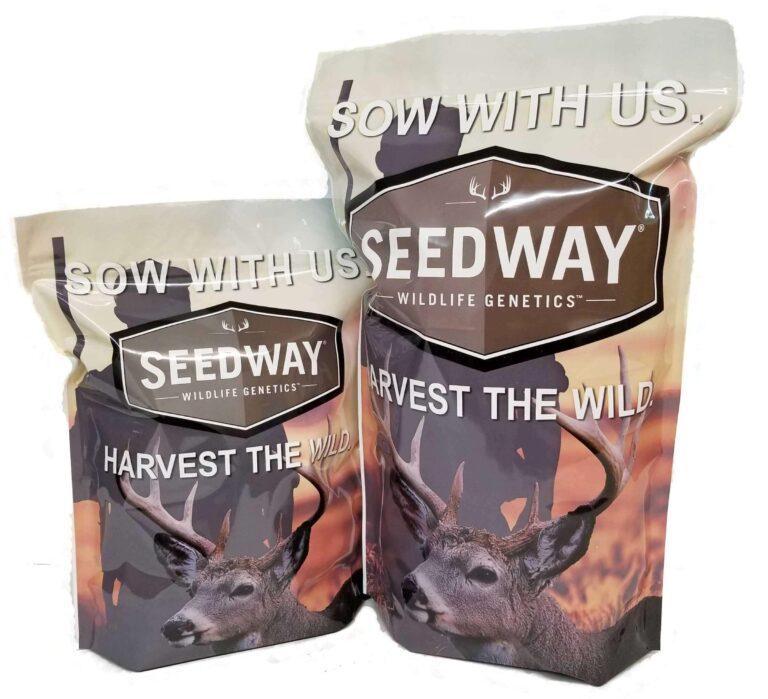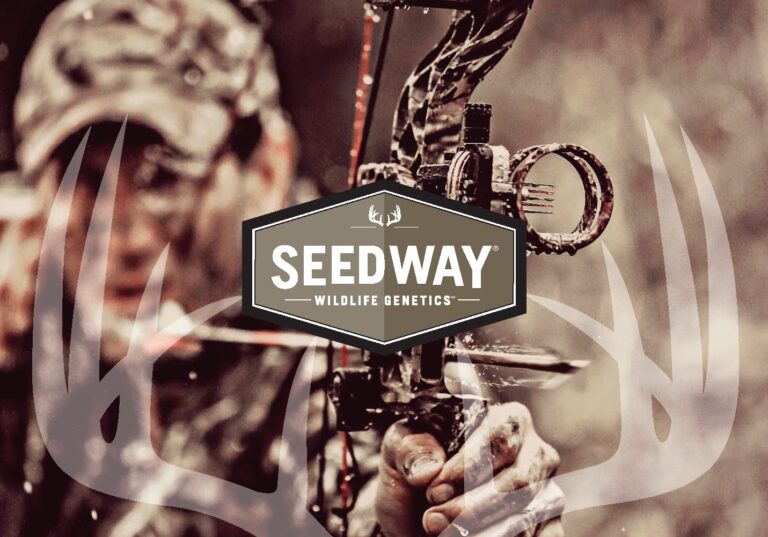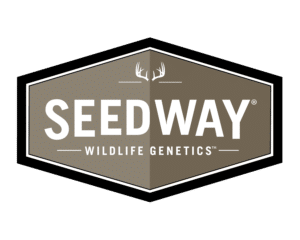SEEDWAY® Wildlife Genetics™
Since 1963, SEEDWAY, LLC has brought powerful, regionally adapted, high yielding products to the commercial farmer throughout the Northeast. Through extensive research and trialing this holds true for our wildlife food plot seed as well. With more than 57 years of accrued knowledge we are proud to bring to you SEEDWAY® Wildlife Genetics™ brand seed products.
Wildlife Genetics™ utilizes premium and regionally adapted seed varieties for the to attract, pattern and hold wildlife. Whether it be for the nature enthusiast or the avid sportsman we can provide the best seed for the right acres to get the job done. Don’t risk your hard earned money and your hunting season on inferior seed. Look over our products and know you are buying some of the best food plot seed and blends available in the market today. SOW WITH US, HARVEST THE WILD!

Sow With Us, Harvest The Wild!
Shop Wildlife Genetics
Wildlife Products
View our products online:
View our Wildlife ProductsDownload the catalog:
Wildlife Genetics BrochureMaximizing Your Food Plot’s Potential
Planting food plots is the single most effective way of attracting, growing, and keeping wildlife on your property. You should strive to have a spring, summer, fall and winter food source on your property to keep the wildlife coming year round. Whether it’s your first time or you have been planting for years, the following steps will ensure you maximize your food plot potential.
Step 1: Soil Testing
The most important part of planting a food plot is taking a soil sample. Choose an area that is well drained and gets sufficient sunlight throughout the year. Take a sample of the food plot area before planting. A soil sample report provides you with the soil pH and nutrient levels in that soil. It also provides recommendations for amounts of lime and fertilizer that needs to be applied for the food plot species you are planting.
Step 2: Eliminating Weeds
Prepare your future food plot area by eliminating weeds with a glyphosate herbicide prior to planting or tilling.
Step 3: Liming and Raising Soil pH
Apply proper amounts of lime based on your soil sample recommendation. Optimum pH levels are needed for plants to fully utilize fertilizer and maximize root growth. A pH of 6.3 to 7.0 works best for most food plots.
Step 4: Fertilizing
Apply fertilizer based on soil sample recommendations before seeding. This will provide essential nutrients for proper plant and root growth, helping with good establishment and promoting continuous growth.
Step 5: Proper Tilling
Tilling is necessary to work the lime and fertilizer into the soil. Proper tilling with the use of implements such as disc, roto-tiller or harrow, will work up the top 4 to 8 inches of soil. This creates a perfect seed bed to allow more seeds to germinate, creating maximum tonnage on your plot.
Step 6: Seeding Your Plot
For smaller seeds, it is best to culti-pack or roll your plot before seeding. Doing this will create a firm seed bed. Next, broadcast your seed and culti-pack or roll again, which creates proper seed-to-soil contact. Small seeds need to be less than a quarter of an inch deep when planted. For larger seeds, use a planter, a drill, or a pull-behind spreader to dispense the seeds. Then drag the seeds to lightly cover them. Plant these seeds up to ½” deep.
Step 7: Maintaining Your Food Plot
Your food plot will get a lot of grazing pressure from the resident wildlife. As long as you can maintain enough forage on your plot, you will continue to attract game to your plot and keep them on your property. Be sure to fertilize your plot annually to ensure quick recovery and maximum plant growth throughout the year.
